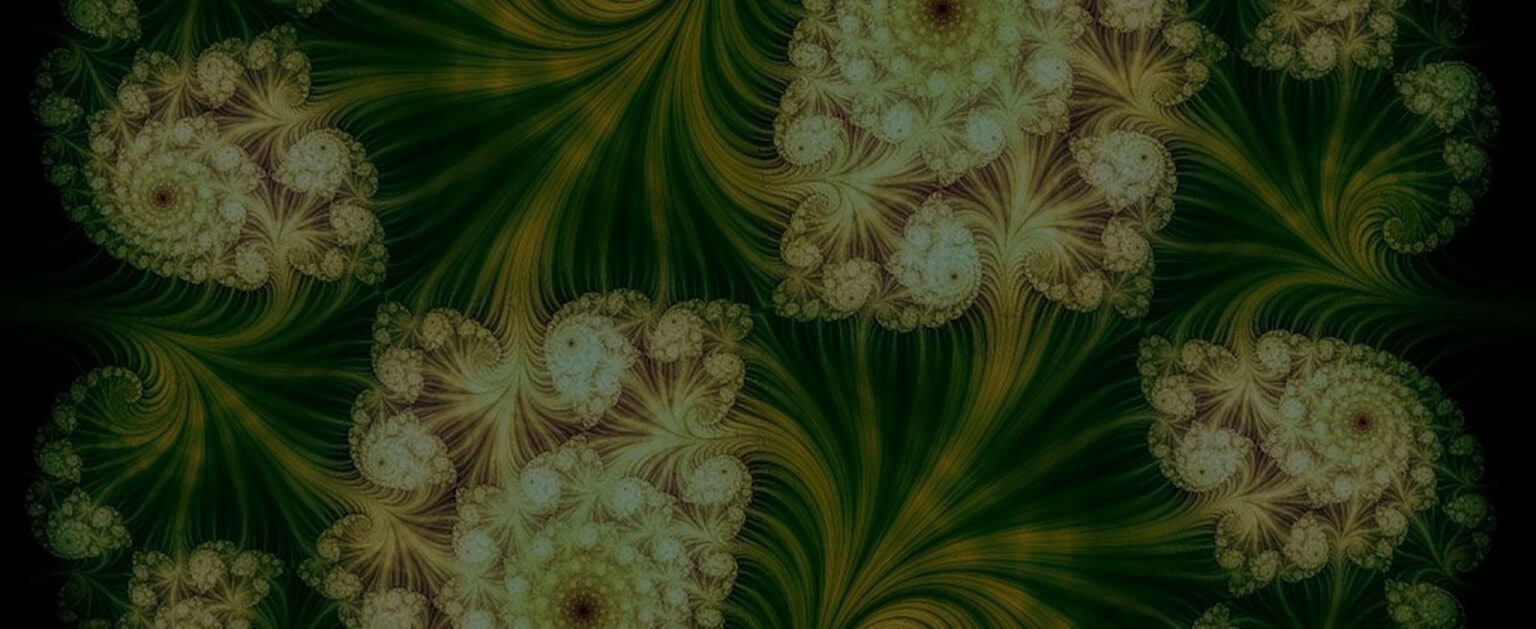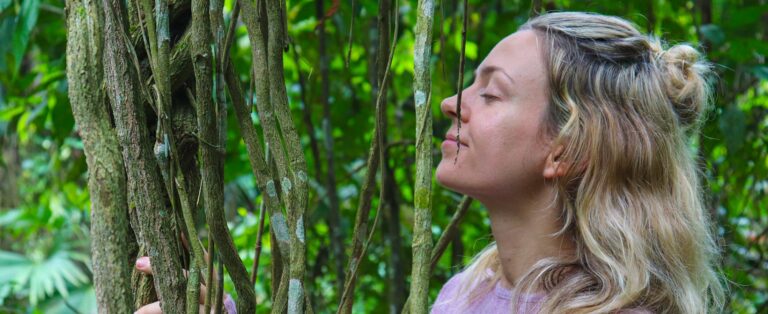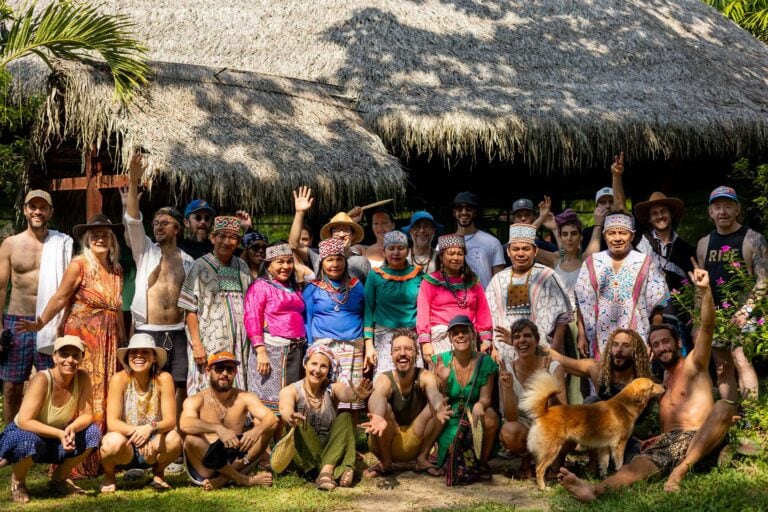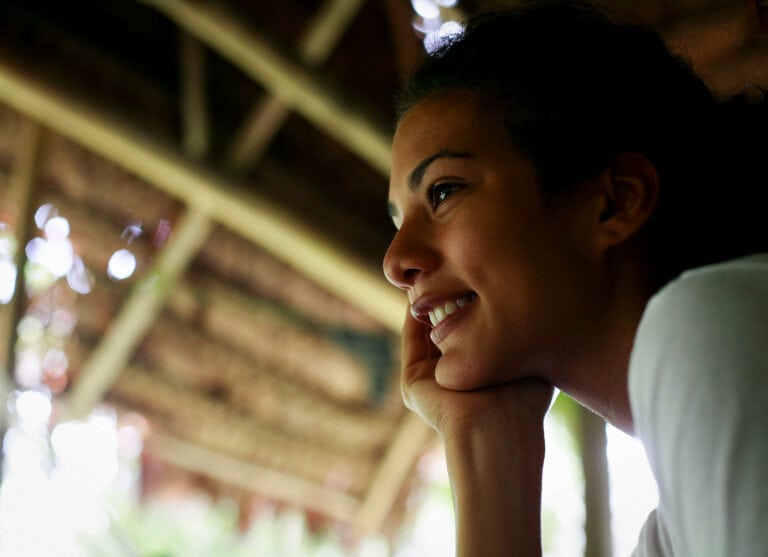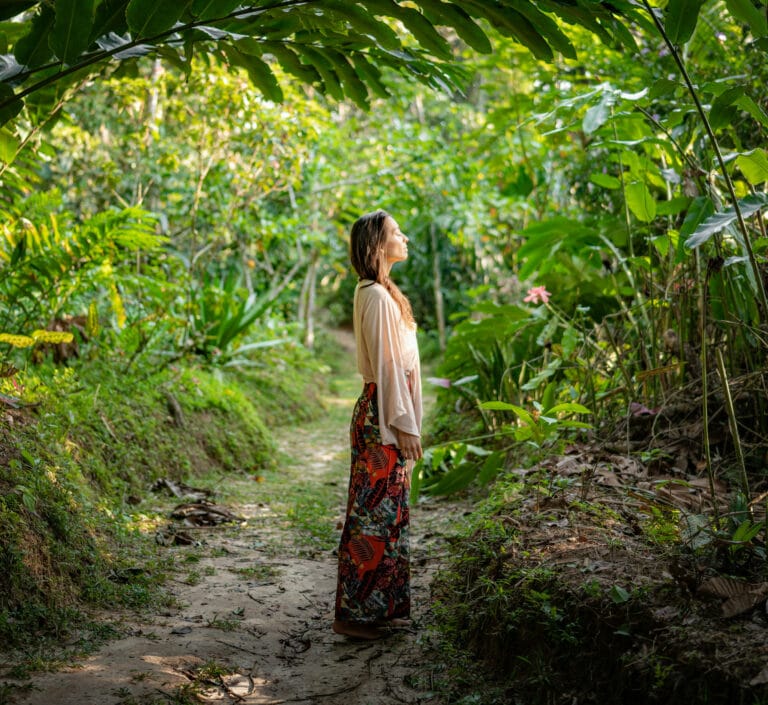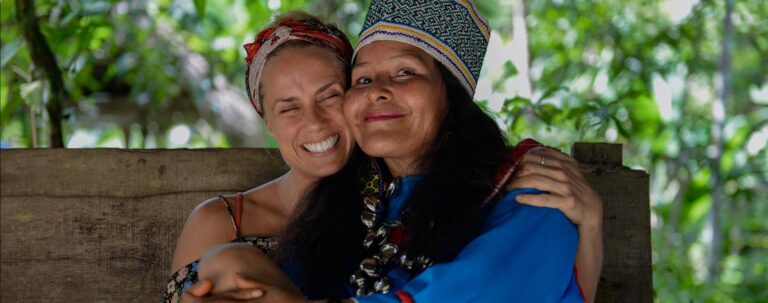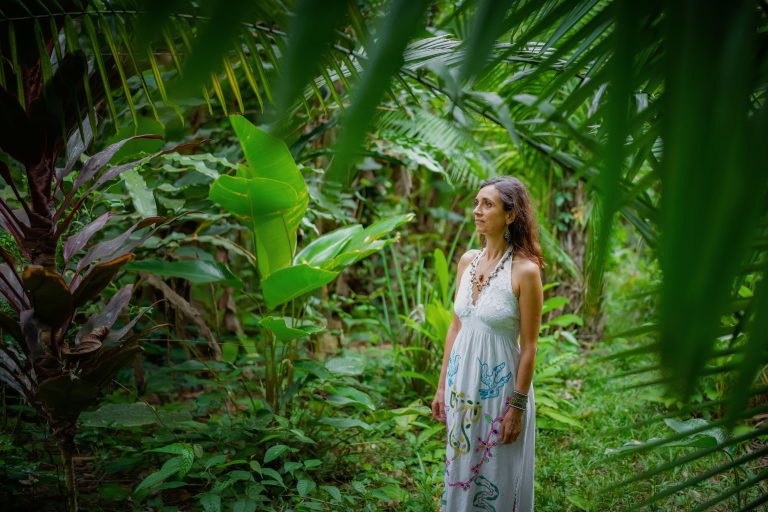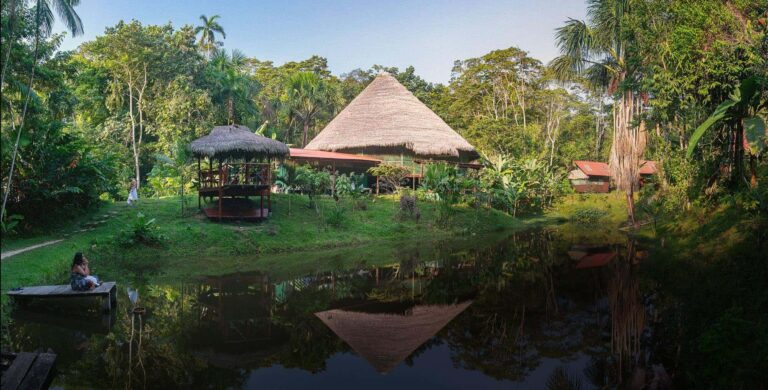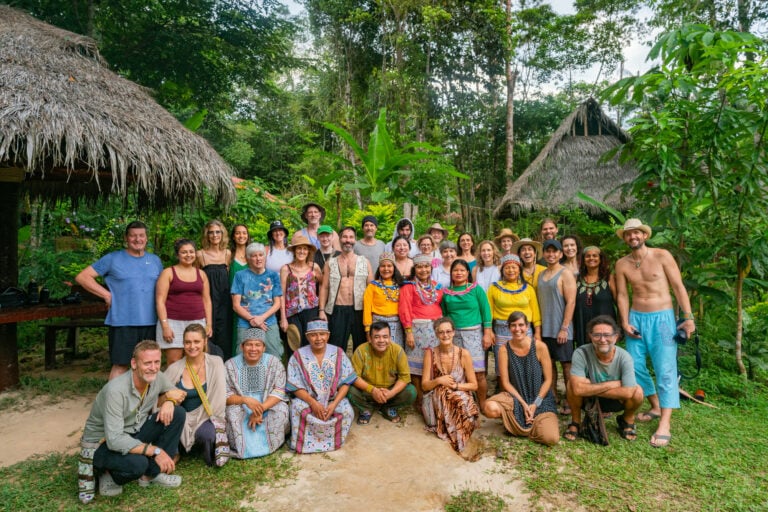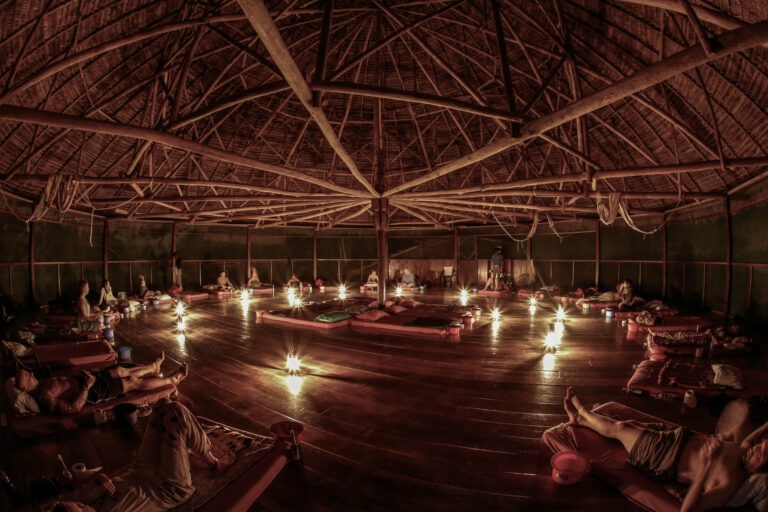Why People Search for an “Ayahuasca Trip”
Across the internet, thousands search for “ayahuasca trip” — curious about psychedelic visions, mystical journeys, or even just “what it feels like.”
For many, the word “trip” suggests a night of unusual, otherworldly experiences of altered states of consciousness. A hallucinogenic adventure. However, according to the Shipibo tradition that we honor and practice at the Temple of the Way of Light, we perceive things quite differently. Ayahuasca is not a recreational substance, nor is it something to “try” for curiosity.
It is a sacred medicine, carried by lineages of healers and wisdom keepers in the Amazon for countless generations. To drink ayahuasca is not to take a trip; it is to step onto a healing path that demands commitment, courage, trust, and patience.
What People Mean by “Ayahuasca Trip”
For many first-time seekers, an “ayahuasca trip” means:
- Having visuals of colors and patterns
- Seeing spirits/spiritual beings
- Feeling non-ordinary states of consciousness
- Telling a “wild story” afterward
Yes, ayahuasca may bring visuals and visions. But the visuals and visions are not typically the source of the healing nor the primary reason why a ‘patient’ would drink ayahuasca.
The real work is most often experienced in the realm of feeling: releasing trauma, softening fear, embracing suppressed emotions, opening to love, and experiencing a deep connection to nature.
When ayahuasca is approached only for the “trip,” the deeper layers of healing and the true gifts are often missed. Once deep healing has been carried out, we then feel aligned – body, mind, heart, and soul. This is the goal.
Why the Temple Does Not Offer “Trips”
The Temple of the Way of Light is not a tripping center or an ayahuasca “tourism” center. We do not offer quick “ayahuasca experiences”, one-night ceremonies, or mini-retreats
Guests who come to the Temple are not tourists; they are sincere seekers of healing and spiritual growth, who often come with long-standing pain, grief, depression, anxiety, and a sense of disconnection.
Without extensive preparation, guidance, and integration, ayahuasca experiences can feel overwhelming or confusing. This sacred medicine is powerful and profound. For it to truly serve, it must be held in a safe and highly experienced container.
At the Temple, every retreat is guided by advanced-level Shipibo healers, supported by experienced facilitators who guide participants in preparation beforehand, throughout the healing process during the retreat, and then through the many months of integration that follow.
Healing is not about feeling better, it’s about better feeling.
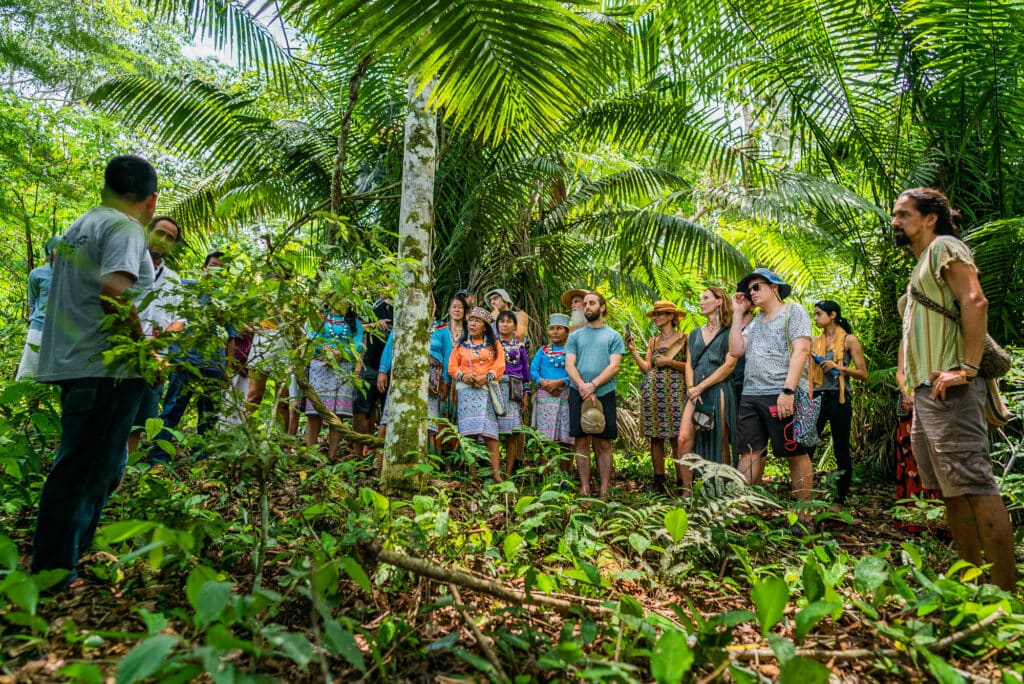
Ayahuasca as Sacred Medicine, Not Entertainment
In Amazonian traditions, ayahuasca is not a “psychedelic” but a sacred medicine and teacher. The Shipibo culture sees ayahuasca as central to a complex medical system, yet deep healing involves much more than their patients just drinking the brew.
True healing requires experienced healers (Onanyabo) to sing icaros, or sacred healing songs, during each ayahuasca ceremony. Healers undergo rigorous plant dietas called Sama (a rainforest plant-spirit medical school) to connect with master plants, who inform every aspect of the healing process. During a ceremony, the healer performs energetic healing, often described as spiritual surgery.
Guided by the healer’s icaros, a “symphony of healing” works on all levels of a person. Without this guidance, what people experience can be mere “illusion” or projections of their own mind, which often bypasses the deeper trauma that needs healing.
Historically, patients didn’t even drink the medicine themselves. Only the healer would drink to diagnose and treat the root causes of illness, only administering ayahuasca to the patient at the end of the treatment so they themself could see the roots of their suffering.
Ayahuasca is a diagnostic tool, enabling healers to gain insight into their patients’ lives, including their biography and ancestral lineage. Western approaches that treat ayahuasca as just a psychedelic miss this depth. Without the knowledge of an Onanya, which literally means “one who knows,” there is no safe space or protection to guide the healing process.
The Risks of Seeking Only a “Trip”
Ayahuasca tripping carries real dangers:
- No preparation → can be dangerous – physically, mentally, emotionally, energetically, and spiritually, leading to retraumatization, energetic misalignment, and disassociation.
- No integration → can lead to feeling overwhelmed, misunderstood, confused, alone, and lost.
- Inexperienced facilitators → many facilitators of ayahuasca ceremonies/retreats have not been through the many years (minimum 5) of training that is required to understand this sacred space.
- Charlatan healers and pseudo shamans → ayahuasca has now become an industry. Sadly, many people, both in and out of the Amazon, now profess to be shamans who have had little or no training. A genuine apprenticeship typically lasts at least ten years, while mastery takes decades to achieve.
- Spiritual bypass → some people experience mental/imaginary projections in ayahuasca ceremonies, which they believe to be true. Most often, they are illusions that block the participant’s ability to address the deeper wounds within.
Ayahuasca is not a shortcut or a quick fix. Without the right context and experienced guidance, it can destabilize and retraumatize rather than heal.
What the Temple Offers: A Healing Journey
At the Temple, ayahuasca is always approached as a core aspect of the healing journey, not an isolated trip.
- Preparation: Guests follow a dieta, cultivate intention, and enter ceremony with reverence. Physical and emotional readiness is supported, and trust is developed, before stepping into the maloca.
- Ceremony in Safety: Led by genuine Shipibo healers with decades of experience, supported by experienced facilitators who are committed to their own long-term healing process, and trained within the Shipibo tradition. Read more about Safety at The Temple.
- Integration: Following the retreat, participants participate in a 3-month Integration Program, receiving tools, practices, and community support to integrate the lessons of the medicine into their lives safely.
This path transforms not only personal struggles, but also how we relate to ourselves, to others, and to the world. We step into ‘Right Relationship’. Healing is not just individual; it eventually ripples outward into our families and the collective.
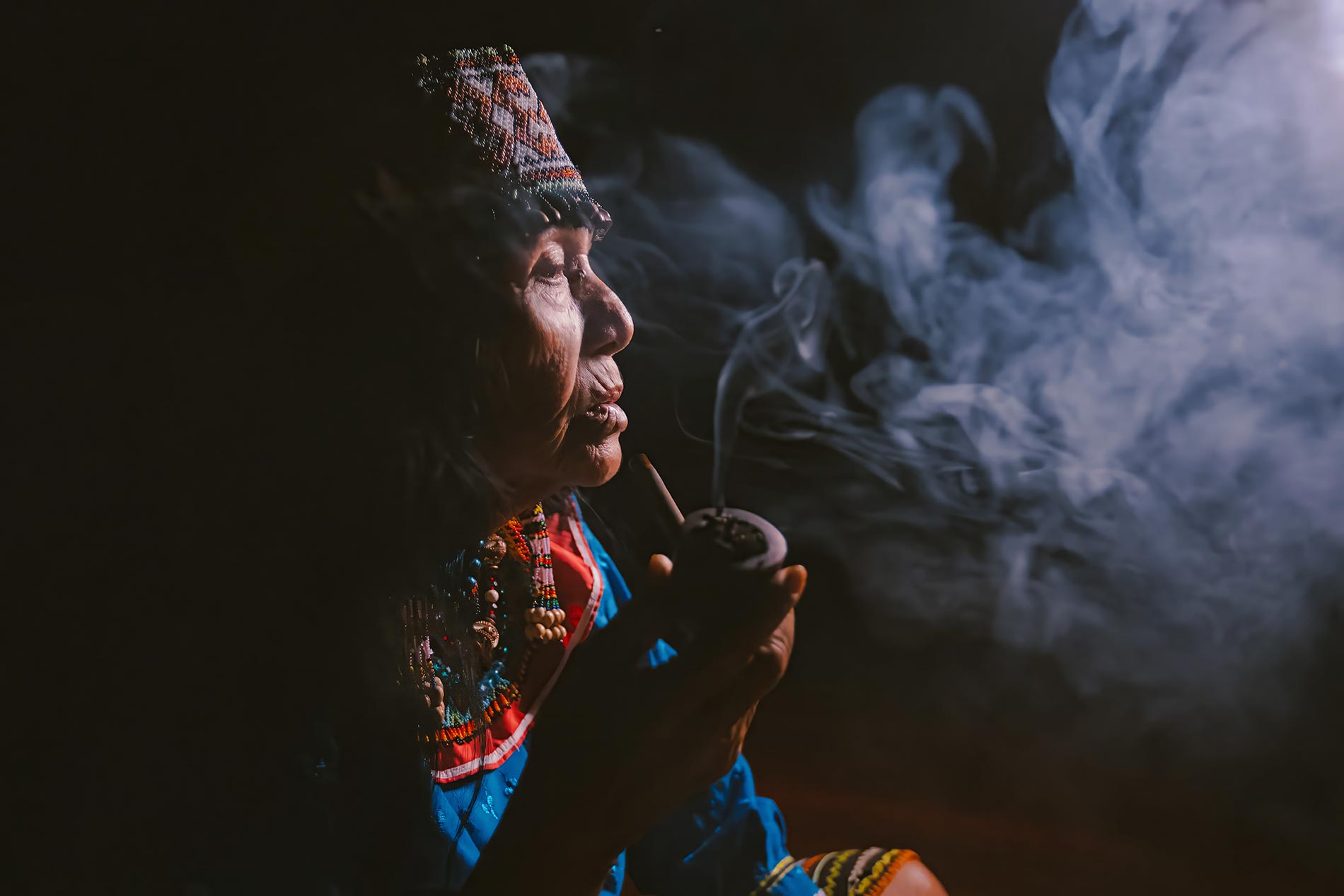
Protecting Tradition and Ancestral Knowledge
The rise of interest in ayahuasca has brought both blessings and risks. On one hand, more people are finding healing where Western medicine has failed. On the other hand, commercialization, appropriation, and extractive ways have created “ayahuasca tourism”, which now threatens to reduce this sacred medical practice into an exotic, bucket-list experience.
At the Temple, we hold a deep responsibility to honour, protect, and preserve Shipibo healing traditions. Our work is rooted in integrity, reciprocity, and respect:
- Authentic Lineage: We collaborate exclusively with genuine Shipibo healers who carry decades of experience and are deeply committed to healing.
- Cultural Reciprocity: A portion of all proceeds supports the Chaikuni Institute, an NGO we founded in 2012 that empowers Amazonian communities through permaculture, agroforestry, intercultural education, and rights advocacy.
- Environmental Stewardship: We protect and regenerate the land, honoring the Amazon as the living source of these sacred medicines.
When people come to the Temple, they are not just healing themselves; they are supporting the continuation of a sacred tradition that has served humanity for centuries.
Ayahuasca Trip vs Healing
It is common to arrive with the intention of experiencing an “ayahuasca trip.” But what unfolds is far deeper. Correctly administered medicine does not give you a trip; it helps to cleanse the energetic and emotional blockages that fuel negative thinking, limiting behaviours, and unhealthy patterns. It’s pointless to ‘trip’ in the Amazon if you don’t experience ongoing and lasting transformation in your day-to-day life when you return home.
Preparation and integration are not mere side notes; they are integral parts of the healing process. The dieta, the intentions, the ceremonies, and the integration afterward, together, form a profound and long-term path of healing and transformation.
At the Temple of the Way of Light, we honor ayahuasca as sacred medicine that sits as a nexus within a vast and sophisticated spiritual healing system. We invite all who feel called to ayahuasca, not for tripping’s sake, but following a deep call to begin a profound journey of healing. When ayahuasca healing is approached with humility, respect, and reverence, it is not a one-off trip at all. It catalyzes a lifetime of transformation.
